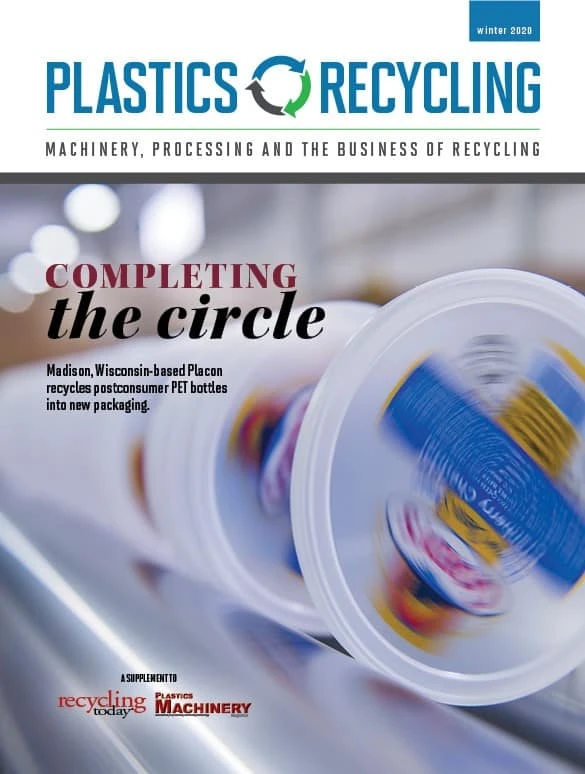
There’s no shortage of positive developments to talk about when it comes to plastics recycling. Now that we’ve entered a new year—and a new decade—it’s time we start talking about them a lot more, and in a way that reflects how far this industry has come in the span of the 21st century.
Years ago, when novelists and screenwriters pictured 2020, they imagined flying cars, robots, teleportation and other technologies that have yet to affect our day-to-day lives. While, for many sectors, today’s world looks much like yesterday’s world, in the realm of plastics recycling, the future is now, and bigger changes are coming.
Sometimes the simplest change is the most elegant and effective. We’ve discussed our Pacific Northwest Secondary Sorting Demonstration Project in these pages before. The pilot has ended, and the results are encouraging. By sorting materials twice, we can reduce bale contamination and increase the value of recycled plastics.
We’re still collecting data and investigating the replicability of this project in other states and cities; but, from what we’ve learned so far, we think adding a secondary sorting facility to the process of sorting our nation’s recyclables could have a major impact on the supply of, and market for, recycled plastics. (See “A secondary solution,” starting on Page 18, for more information on the results of this project.) The future doesn’t always have to look “futuristic;” it just has to work.
Innovations in recycling aren’t always technical but legislative. Four bills supported by the Plastics Industry Association (PLASTICS) that would have an enormous impact on our nation’s recycling infrastructure are now before Congress.
The Save Our Seas Act 2.0 would address marine debris and find ways to keep plastic materials out of our oceans and waterways and in our recycling streams.
The Recycling Enhancements to Collection and Yield through Consumer Learning and Education (RECYCLE) Act would authorize funds for companies and communities to ramp up recycling outreach and education.
The Sustainable Municipal Access to Resilient Technology in Infrastructure (SMART Infrastructure) Act would make it easier for plastic materials to compete fairly in federal infrastructure projects, like using plastic pipe—which is made using up to 40 percent recycled content and accounts for 25 percent of the entire postconsumer high-density polyethylene market.
The Realizing the Economic Opportunities and Value of Expanding Recycling (RECOVER) Act would make strides in improving our nation’s ability to properly collect, sort and reuse materials—investing in infrastructure and education initiatives while opening up financial resources, increasing the potential for innovations.
The changes these bills would make might not be as exciting as a flying car, but maybe they should be. Together we can push our country to lead the world into a new era of plastics recycling—one where every material is too valuable to end up as litter. We must build a way to live with these materials because we most certainly would not want to live without them.

Explore the Winter 2020 Plastics Recycling Issue
Check out more from this issue and find your next story to read.
Latest from Recycling Today
- Aqua Metals secures $1.5M loan, reports operational strides
- AF&PA urges veto of NY bill
- Aluminum Association includes recycling among 2025 policy priorities
- AISI applauds waterways spending bill
- Lux Research questions hydrogen’s transportation role
- Sonoco selling thermoformed, flexible packaging business to Toppan for $1.8B
- ReMA offers Superfund informational reports
- Hyster-Yale commits to US production





